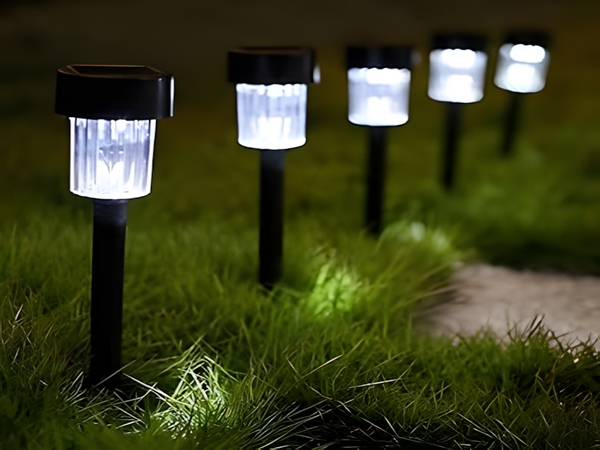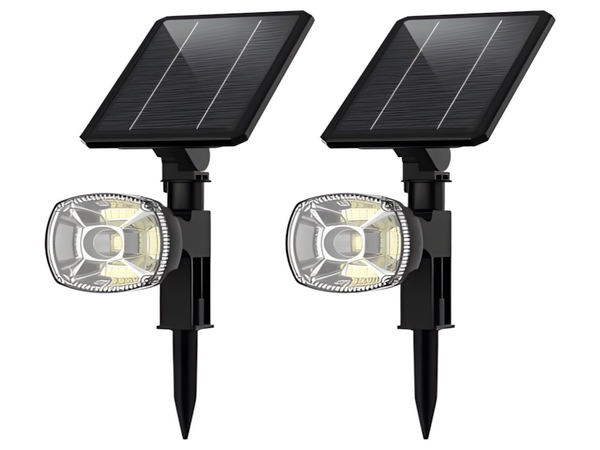

Currently, solar street lights have been installed on the streets of most cities in our country, and even in rural areas. As a new type of energy-saving street light, solar street lights have received widespread recognition from society, with the state also investing significant human and material resources to support this development. This has led to a long-term and favorable development of solar street lights. Then, what factors influence the performance parameters of the solar street light battery components? The following is an introduction from the editor of Century Sunshine Lighting.
(1) Short-Circuit Current (Isc)
When a solar cell is placed under standard light source irradiation and the output end of the solar cell module is short-circuited, the current flowing through the solar cell is the short-circuit current of the module. The method to measure the short-circuit current is to connect a current meter with an internal resistance of less than 1Ω to both ends of the solar cell. The short-circuit current varies with changes in light intensity.
(2) Peak Current (Im)
Peak current, also called maximum operating current or optimal operating current, refers to the operating current when the solar cell module outputs its maximum power, and its unit is A.
(3) Peak Voltage (Um)
Peak voltage, also called maximum operating voltage or optimal operating voltage, refers to the operating voltage when the solar cell outputs its maximum power, and its unit is V. The peak voltage of the module varies with the number of solar cells connected in series; a module with 36 solar cells in series has a peak voltage of 17 to 17.5V.
(4) Open-Circuit Voltage (Uoc)
Under light source irradiation, when the ends are open-circuited (the positive and negative terminals of the solar cell module are not connected to a load), the output voltage value of the solar cell is the open-circuit voltage. The unit of open-circuit voltage is V. The open-circuit voltage varies with the number of solar cells connected in series; a module with 36 solar cells in series has an open-circuit voltage of about 21V. A high-resistance DC millivoltmeter can be used to measure the open-circuit voltage of the battery.
(5) Maximum Output Power
If the selected load resistance value can maximize the product of output voltage and current, then the maximum output power can be obtained, represented by the symbol Pm. The corresponding operating voltage and current are referred to as optimal operating voltage and optimal operating current, represented by the symbols Um and Im respectively, where Pm = UmIm.
The product of the rated voltage and rated current is the rated power. The rated output power is the maximum output power under normal conditions (capable of long-term operation). The rated output power of solar cells is related to conversion efficiency. Generally, the higher the conversion efficiency of a solar module per unit area, the greater its output power. Currently, the conversion efficiency of solar cells ranges from 14% to 17%; the output power per square centimeter of the solar cell is between 14 and 16mW, and the output power of a solar module is approximately 120W.
(6) Peak Power (Pm)
Peak power, also known as maximum output power or optimal output power, refers to the maximum output power of the solar cell module under normal operating or testing conditions, which is the product of peak current and peak voltage: Pn = ImUm. The unit of peak power is W. The peak power of solar cell modules depends on solar irradiance, solar spectrum distribution, and the module’s operating temperature; thus, measurements of solar cell modules should be conducted under standard conditions. The testing standards for solar cells specify a spectral distribution at an atmospheric quality of AM1.5, solar irradiance of 1000W/m2, and a temperature of 25°C. Under these conditions, the output power of solar cells is defined as the peak power of the solar cells.

(7) Fill Factor (ff)
The fill factor refers to the ratio of the maximum power of the solar cell module to the product of the open-circuit voltage and short-circuit current: f = Pm/(IsU). It reflects the characteristics of the cell’s output power variation with changing loads. The fill factor is one of the important parameters that characterize the quality of solar cells. A larger fill factor indicates better performance of the solar cells.
The above information on the factors influencing the performance parameters of solar street light battery components is shared here. I hope this article is helpful to everyone. If you have any questions, feel free to leave a message, and we will respond as soon as possible.



